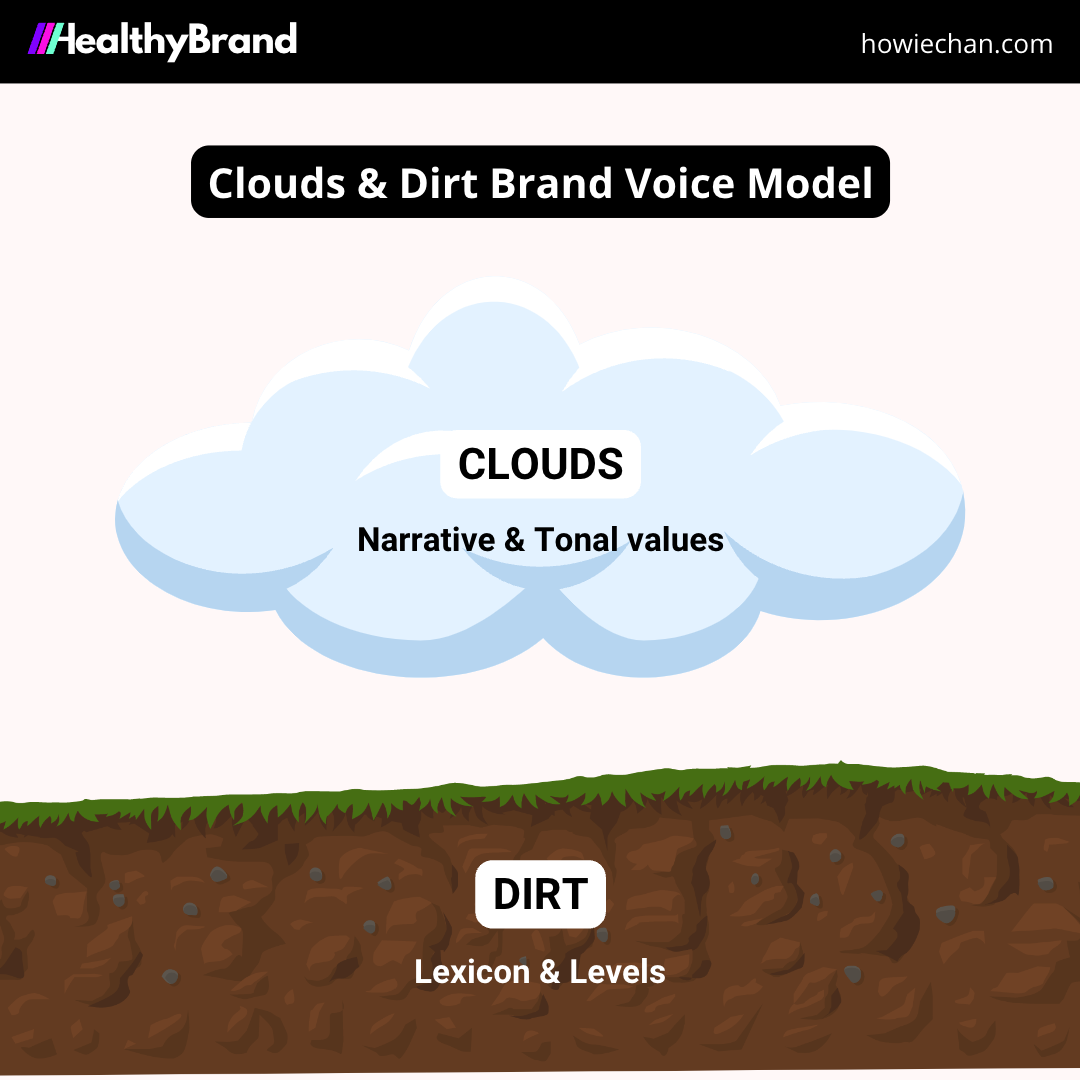Establish the Voice of Your Brand & Get Ready to Be Loved
Get posts directly delivered to your inbox HERE
Read time: 3 min
At a glance:
Quote: Voice matters
Lesson: The Clouds & Dirt brand voice model
Quote
"It only takes one voice, at the right pitch, to start an avalanche."
Dianna Hardy, Author
Lesson
Words move people.
From “I have a dream” to “This was their finest hour”, language creates ideas in people’s minds and if you change the language, you can change the ideas. “Self-checkout” sucks, but “express checkout” is attractive. “Sports mode” is ok, but “ludicrous speed” is exciting. Yes, words matter, both what you say, but more importantly how you say it.
One of the most informing book I read about the power of language and how to create a brand voice comes from Strong Language by Chris West. (Go buy the book! You won’t regret it!) He uses the example of Mini and Ferrari, showing how a brands voice can show up dramatically differently.
Mini
Born to corner. Driving a Mini is a ton of fun, thanks to its legendary go-kart handling. We could go on about its lightning quick responses and glue-like grip…
Ferrari
The Ferrari embraces the Side Slip Control 6.0 concept, which incorporates an algorithm that delivers a precise estimate of sideslip to the onboard controls systems…
It gave me and my practice of brand strategy an adaptable model to create a voice for any brand I’m helping to create.
Establish a voice for your brand that your audience will recognize and love
In this issue, I will share with you the Clouds & Dirt Brand Voice model, derived from the brilliant work of Chris West.
MACRO VIEW “CLOUDS”
Narrative
At the highest level, we need to know what story the brand is always telling. This sets up who the brand is trying to be. If there is already a brand strategy document, you will find either a brand narrative or you will be able to craft a narrative from the purpose, core values and personality traits. Here are some questions the brand narrative needs to answer:
What is the world the brand is trying to create?
What kind of people live in this brand’s world?
What does the brand stand for or against?
What does this brand believe in?
Example:
Mini (the Mini Cooper) believes in a world where driving your car should be fun, like driving a go-kart.
Tonal Values
You only need three tonal values. Each of them with descriptions that make the value clearer. Tonal values can be extracted from the brand personality. A brand that is “caring” can have a tonal value that is “friendly” or if a brand that is “prestigious” can have a tonal value that is “aloof”.
To give the tonal value more specific descriptions, use the 5 HOW technique, ask it again and again, until you get the value defined and differentiated in the category.
The brand sounds friendly.
How so?
It’s friendly like your neighbor
How like a neighbor?
Like someone who is welcoming
How is it welcoming?
By being very open, acknowledging your presence and sharing information
(Here we are getting someone - Friendly through information sharing)
You can keep going until you get to something highly relevant and differentiating for the brand.
MICRO VIEW “DIRT”
Once you have the Clouds set, it’s time to get down to the ground and really be specific.
Lexicon
Jargon is inevitable in any industry. The question is, which ones will you retain and which ones will you kill? If you are launching a whole new sub-category that is trying to differentiate itself, what words will you kill from your vocabulary?
What are some of the most used but meaningless words that your brand will not stand for?
Create a list around different groups, for example:
Product description
Customer service
Culture and careers
Problem statement/ disease state
Category/ sub-category description
Levels
When you have your tonal values, there is an ability to fine-tune them by your audiences. Take each tonal value and give them a 0-10 scale where your language most embodies that value at 10 and least embody that value at 0 (neutral). So effectively you have different levels of each value by audience.
For each of your key audiences whom you will be developing targeted copy for, go through an exercise to score a number on the scale to denote how much of that tonal value you will be using.
Example
Physician audience (Friendly 5, Prestigious 8, Nimble 10)
Patient audience (Friendly 8, Prestigious 5, Nimble 7)
This will give your brand voice guidelines the specificity it needs so your writers can do their job effectively and efficiently!
Conclusion
Establish a brand’s voice and you can paint the world in the mind of your audiences. They will recognize your brand anywhere and they will love you for it.
Ways I can help you:
Subscribe to Healthy Brand Mondays: Leverage brand thinking to accelerate your growth
Download free guides and tools: Learn from my years of experience as a brand strategist
Work with me: Be a podcast guest or hire my services for your brand

